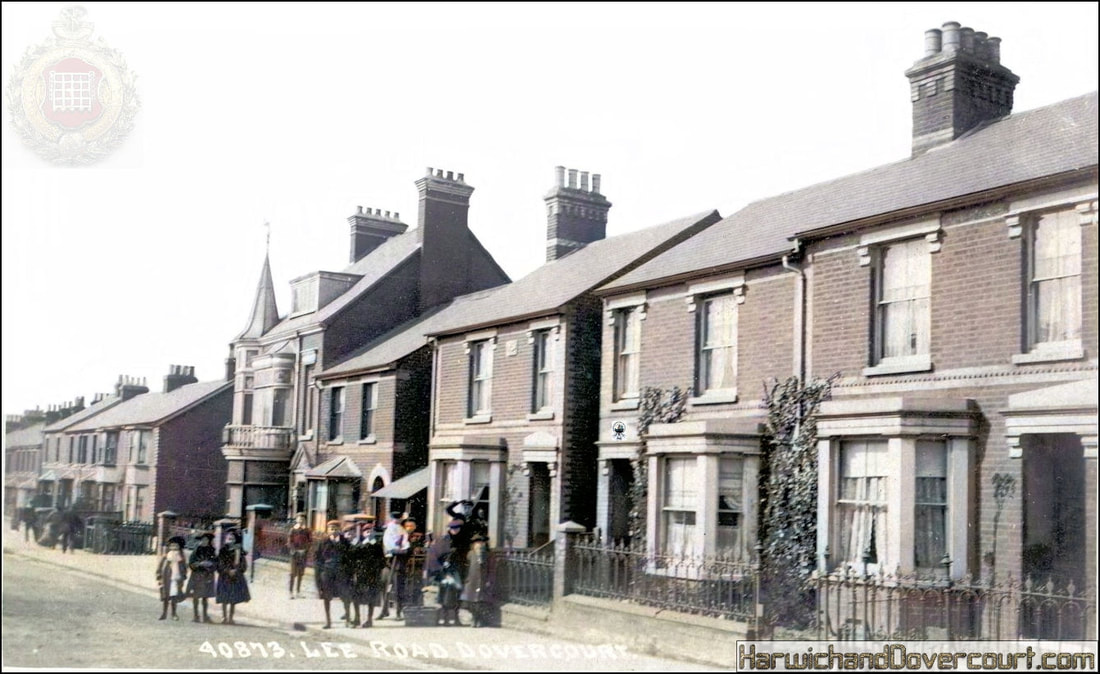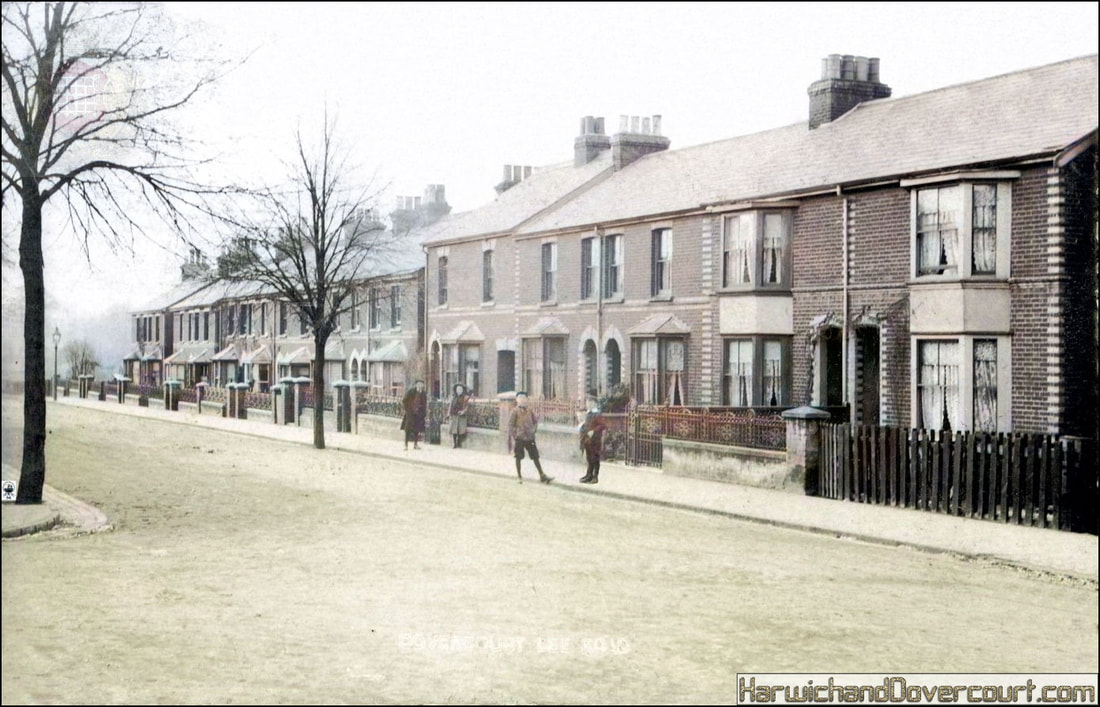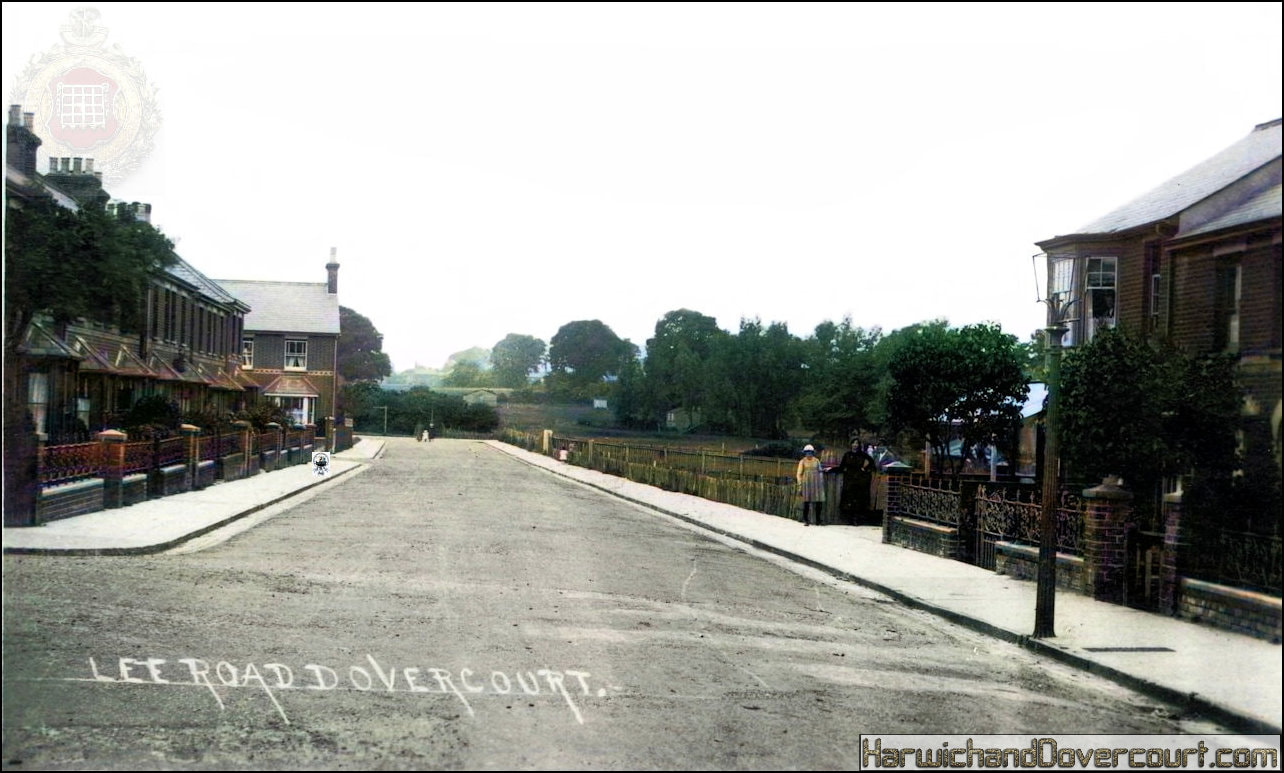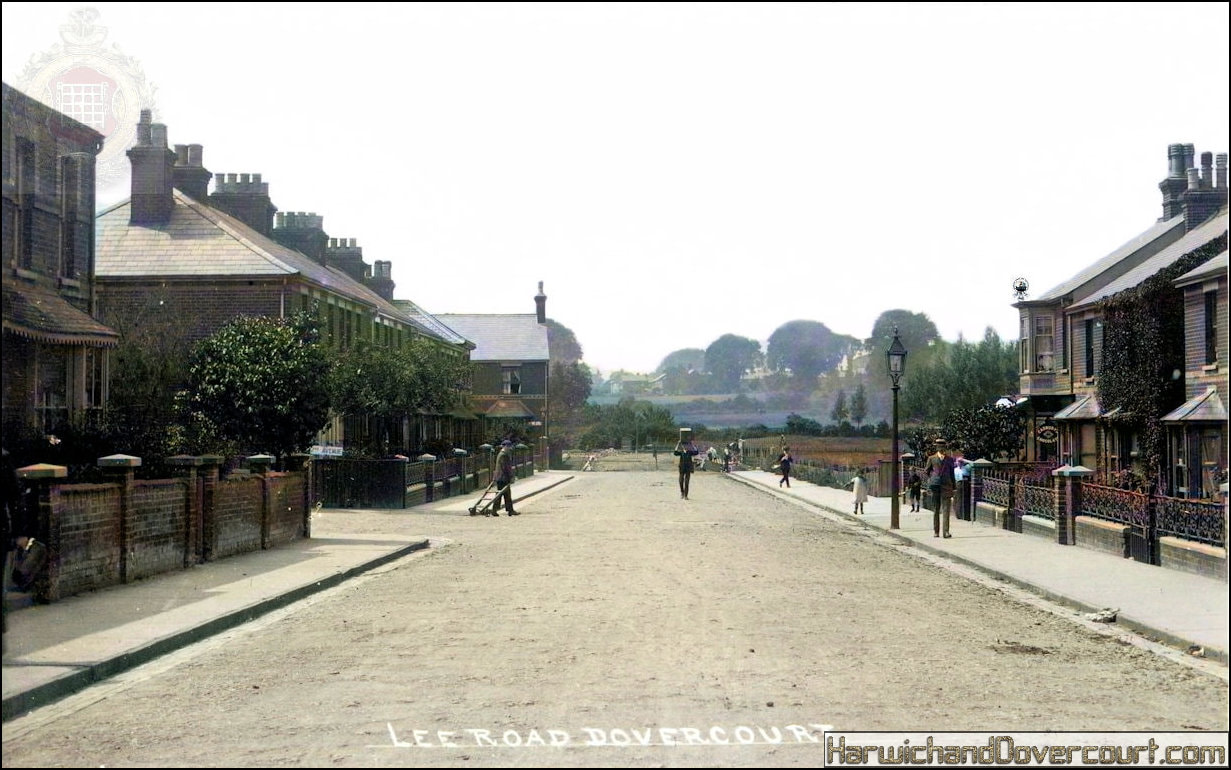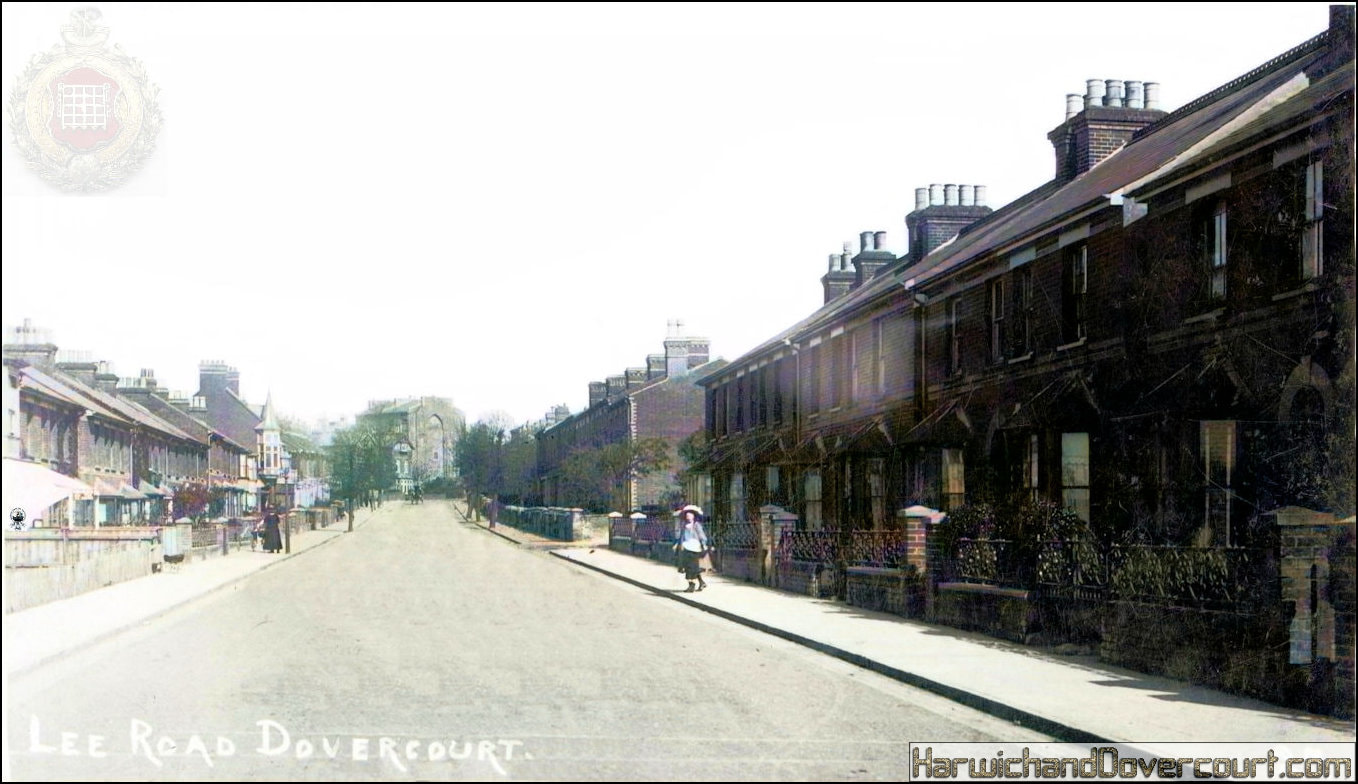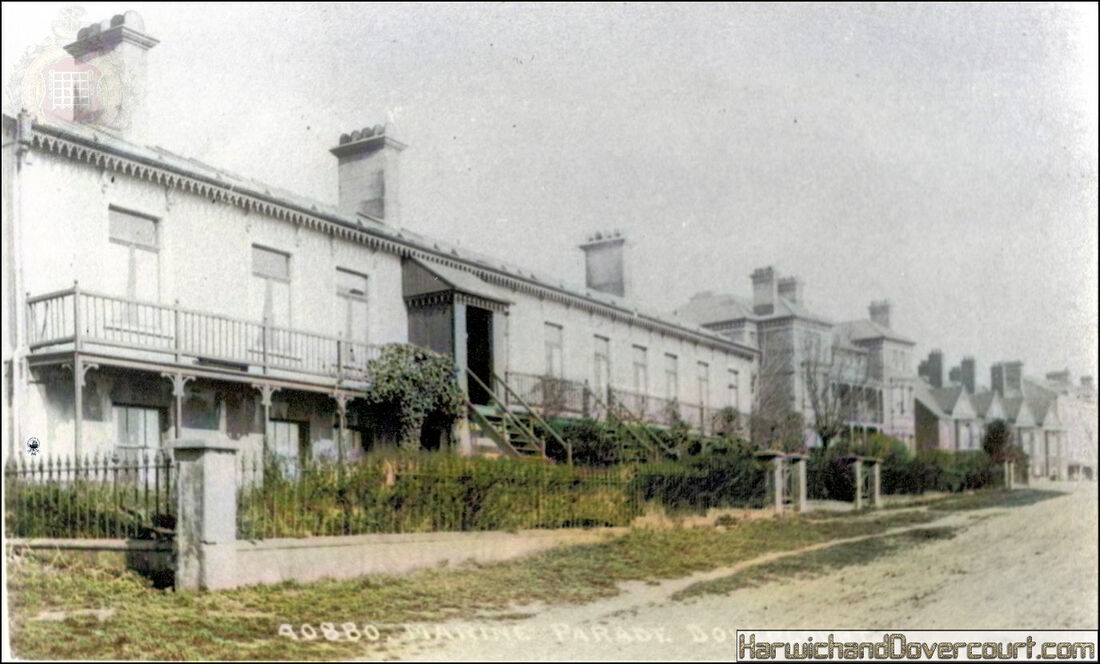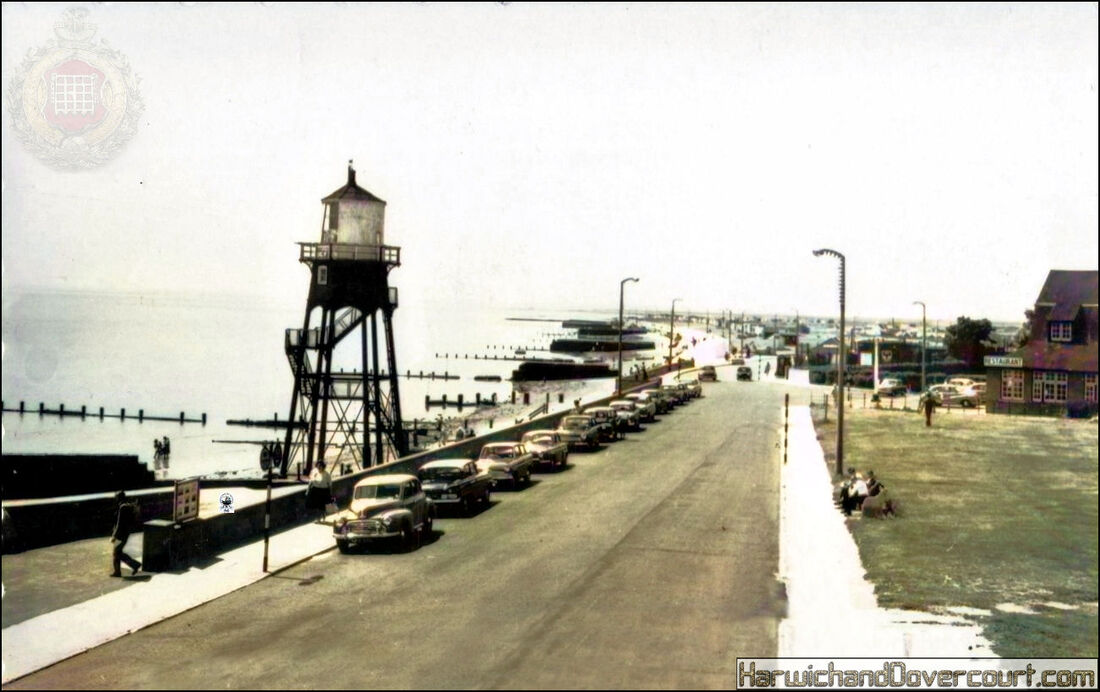Lee Road & Lower Marine Parade
Lee Road ~ Looking West
The road was named after “Henry Lee” of the building firm surprisingly named “Henry Lee & Son” who were also involved in the building of the Stone Pier, local sea defences, promenades and Harbour operations. Eventually the company had financial difficulties and went bankrupt, with the Road finally being completed by the Chelmsford Land Company.
Henry Lee was born on the 31st of August, 1823, and was the eldest son of Mr. Henry Lee, who died in 1867, senior partner of the firm of Henry Lee and Son.
The firm was originally John and Henry Lee, builders and contractors, of Chiswell Street, Finsbury ; subsequently Henry Lee and Sons ; afterwards Henry and John Lee (the two sons above mentioned) ; and eventually, on the retirement of his uncle, Mr. John Lee, in 1848, the subject of this notice, who passed his earlier business years with the latter firm, was taken into partnership with his father, the firm being then known as Henry Lee and Son.
Mr. Henry Lee, personally, preferred the carrying out of engineering works, rather than the building contracts, and greatly interested himself in the construction of the Admiralty Pier, Dover, commenced in 1847.
The manufacture of large concrete blocks with Portland cement was at that time in its infancy, and it is probable that the testing of Portland cement (about which so much has been since written) was then first brought into notice. Mr. Lee also designed a revolving cylinder, the first of its kind, for mixing concrete by machinery, which has not been surpassed for cheapness and efficiency by any subsequent machines.
Among other local contracts carried out by the firm during Mr. Henry Lee’s connection with it may be mentioned :-
Harwich breakwater; deepening Harwich harbour; extension of sea-wall to Dovercourt; sea-wall, groyne, and parade.
New lock entrance and other works at Ipswich docks; new dock and piers, Felixstowe.
Outer batteries at fort at Landguard; alterations to batteries at Harwich ; alterations at Walton, Suffolk ; new fort, Landguard, Suffolk.
In 1886, Mr. Lee’s firm undertook the construction of the Amsterdam Ship Canal, which large undertaking comprised the building of two piers in the North Sea, and the formation of a harbour.
The death of Mr. Lee’s father, soon after the commencement of this contract, threw heavy additional work upon him. Most people in Holland refused to believe that the work would ever be completed, and they consequently declined to support it financially; but they now have the satisfaction of seeing large ocean steamers pass through the canal direct from Amsterdam to the Dutch Colonies. This contract, the affairs of which were not finally cleared up until 1880, no doubt told greatly upon Mr. Lee; his health became far from good, so much so indeed as to make him disinclined to enter into further heavy contracts.
At the time of his death, which took place on the 1st of March, 1889, he was Chairman and Managing Director of the Lake Copais Company, for the reclamation of about 60,000 acres of land near Thebes, in Greece, these works being now in full progress.
Mr. Lee was elected an Associate of the Institution on the 7th of February, 1865.
Henry Lee was born on the 31st of August, 1823, and was the eldest son of Mr. Henry Lee, who died in 1867, senior partner of the firm of Henry Lee and Son.
The firm was originally John and Henry Lee, builders and contractors, of Chiswell Street, Finsbury ; subsequently Henry Lee and Sons ; afterwards Henry and John Lee (the two sons above mentioned) ; and eventually, on the retirement of his uncle, Mr. John Lee, in 1848, the subject of this notice, who passed his earlier business years with the latter firm, was taken into partnership with his father, the firm being then known as Henry Lee and Son.
Mr. Henry Lee, personally, preferred the carrying out of engineering works, rather than the building contracts, and greatly interested himself in the construction of the Admiralty Pier, Dover, commenced in 1847.
The manufacture of large concrete blocks with Portland cement was at that time in its infancy, and it is probable that the testing of Portland cement (about which so much has been since written) was then first brought into notice. Mr. Lee also designed a revolving cylinder, the first of its kind, for mixing concrete by machinery, which has not been surpassed for cheapness and efficiency by any subsequent machines.
Among other local contracts carried out by the firm during Mr. Henry Lee’s connection with it may be mentioned :-
Harwich breakwater; deepening Harwich harbour; extension of sea-wall to Dovercourt; sea-wall, groyne, and parade.
New lock entrance and other works at Ipswich docks; new dock and piers, Felixstowe.
Outer batteries at fort at Landguard; alterations to batteries at Harwich ; alterations at Walton, Suffolk ; new fort, Landguard, Suffolk.
In 1886, Mr. Lee’s firm undertook the construction of the Amsterdam Ship Canal, which large undertaking comprised the building of two piers in the North Sea, and the formation of a harbour.
The death of Mr. Lee’s father, soon after the commencement of this contract, threw heavy additional work upon him. Most people in Holland refused to believe that the work would ever be completed, and they consequently declined to support it financially; but they now have the satisfaction of seeing large ocean steamers pass through the canal direct from Amsterdam to the Dutch Colonies. This contract, the affairs of which were not finally cleared up until 1880, no doubt told greatly upon Mr. Lee; his health became far from good, so much so indeed as to make him disinclined to enter into further heavy contracts.
At the time of his death, which took place on the 1st of March, 1889, he was Chairman and Managing Director of the Lake Copais Company, for the reclamation of about 60,000 acres of land near Thebes, in Greece, these works being now in full progress.
Mr. Lee was elected an Associate of the Institution on the 7th of February, 1865.
#40873 Looking West along Lee Road, Dovercourt taken in 1908 by Bell's Publishing
This original photograph, was taken near the junction of First Avenue and Portland Avenue, with the turreted building, marking the location of "W.Dunn's" (Grocer and fruiterer) in Lee Road.
The road was originally named after Henry Lee who purchased the land from the Bagshaw estate and began building houses in the road around 1882, sadly he ran into financial difficulties and the road was eventually completed by the "Chelmsford Land Company" along with 1st, 2nd and 3rd Avenue.
The road was originally named after Henry Lee who purchased the land from the Bagshaw estate and began building houses in the road around 1882, sadly he ran into financial difficulties and the road was eventually completed by the "Chelmsford Land Company" along with 1st, 2nd and 3rd Avenue.
Dovercourt, Lee Road (1906) H&D CIII FW ~ Looking West
An interesting view looking West along Lee Road, Dovercourt taken in 1906.
The postcard was franked on the 5th October 1906 at 12:15 pm.
The original photograph was taken near the junction of Third Avenue, looking West along Lee Road. Many of the new houses further West, had not yet been built
This card was one of the famous "Bill Hopkins collection"
I have shown the card in its original collection, with reference to the message on the back,with the "marked" house, known as "Forbes Villa"
Postcode for the nearest location is CO12 3BQ
The postcard was franked on the 5th October 1906 at 12:15 pm.
The original photograph was taken near the junction of Third Avenue, looking West along Lee Road. Many of the new houses further West, had not yet been built
This card was one of the famous "Bill Hopkins collection"
I have shown the card in its original collection, with reference to the message on the back,with the "marked" house, known as "Forbes Villa"
Postcode for the nearest location is CO12 3BQ
